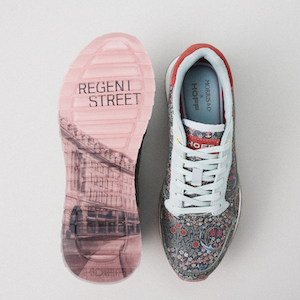News; How to Survive as a (Not Yet Famous) Artist
By Jo Phillips
Being an artist is one thing, making a living from it is another. If you are determined to make it to the very top as an artist, here’s what you need to know until you get there.
Develop Your Craft
Many people have aspirations to sell their art long before they are producing work of a high enough quality to command a decent price. Some artists have developed their talent from the earliest age. These are the people who, as young children, were constantly sketching the world around them. All those years of practice soon lead to an adult with what often appears to be a natural talent for art.
Other people come to art later in life. There are a number of things that can bring people to art as adults, and artistic techniques and skills can be learned by anyone who is willing to put the necessary time into it. However, whereas children are quite happy to draw pictures which look nothing like the world around them, developing their skills as they do, adults are more resistant to this. We have been conditioned to think that mistakes are bad and that we should be aiming to do the best that we can from the very beginning.
Regardless of your background, it is essential that you don’t rush your development as an artist. There is no shame in taking some time to develop your craft and to improve your techniques. On a similar note, you should try your best to start viewing criticism as a positive thing. Of course, if people are just downright rude about your work, pay it no mind! But where people offer you constructive criticism and considered insight into your work, it is worth considering their view. You don’t have to bend to the will of others, but if multiple people raise the same idea with you, that might indicate that a change would be beneficial.
Look for Opportunities to Sell
Anyone who aspires to work in a creative industry making a living selling their creations is faced with the immediate problem of how to sell their work. For an artist, there are a multitude of potential routes you can go down. It all depends on exactly what type of art you’re doing, the genre you are working in, the medium you use, and the size of your pieces. The term ‘art’ encompasses such a broad range of tastes, styles, and intensions that there are few venues in which art, in some form, cannot be sold.
The tools for any aspiring artist to set themselves up with a professional looking website through which to promote and sell their work are freely available to anyone who wants them. Perhaps the most popular way for an artist to start selling their art online today is the website Etsy. Etsy allows users to set up a digital storefront and provides a platform for processing sales. In terms of convenience and ease of use, this is a hard service to beat.
Learn to Live Barebones
The less you are able to live on, the less pressure there will be on you to generate significant income from your work. It is the nature of being self-employed in a creative industry that work is sometimes plentiful, and sometimes hard to come by. It is therefore valuable if you are able to take the squirrel approach. This approach requires that, like a squirrel, you save up the money you earn while you there are plentiful opportunities. You can then tide yourself over when things are a bit slower.
There are a number of simple lifestyle changes that any of us can make, that can significantly reduce the amount of money we spend, even on the essentials. Of course, earning money is no good if you never spend it. You should reward yourself often, which doesn’t always have to involve spending money. Don’t be afraid of treating yourself, especially where you are exceeding your own expectations.
Look for Funding Opportunities
As an artist, you can’t really approach a bank and ask for a loan. Unless, of course, you are looking to start a graphic design company and use your artistic talents that way. If you do have a tangible business in mind, it might be worth putting together a formal business plan and approaching a bank for a loan.
However, if you are looking for ways to fund your artistic pursuits in the short term, a personal loan might be a more appropriate choice. Before you pursue a loan, you should of course have an idea of how to pay it back. Many people would rather not approach their families for loans, but their family may be willing to act as guarantor on a loan. Guarantor loansare a form of loan which can be found through companies such as TrustTwo where someone, a guarantor, agrees to cover your repayment costs if you are unable to, or fail to. Lenders will often see these as lower risk, because if you don’t pay, then your guarantor will. This means that they can offer better terms than other forms of personal loan. Some of TrustTwo’s key guarantor terms are that they must be 21-75 years old, not your spouse, have separate finances and have a good credit record.
With the right attitude, an eagerness to sell your work, and a willingness to embrace frugality, holding out until you make it as an artist can end up being one of the best experiences of your life. You will develop more than just your artistic skills.



